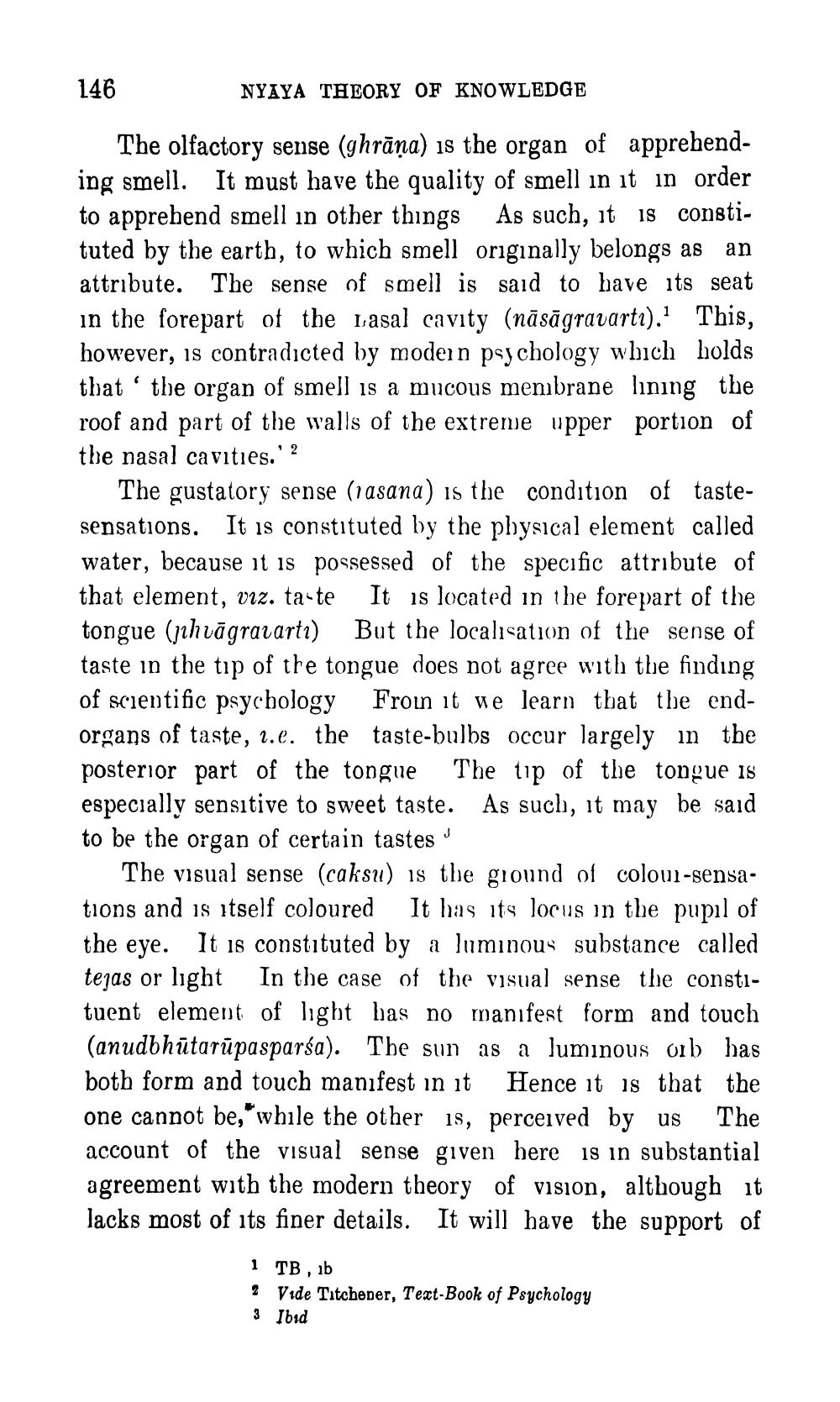________________
146
NYAYA THEORY OF KNOWLEDGE
The olfactory sense (ghrana) is the organ of apprehending smell. It must have the quality of smell in it in order to apprehend smell in other things As such, it is constituted by the earth, to which smell originally belongs as an attribute. The sense of smell is said to have its seat in the forepart of the Lasal cavity (nāsāgravarti).1 This, however, is contradicted by modern psychology which holds that the organ of smell is a mucous membrane lining the roof and part of the walls of the extreme upper portion of the nasal cavities.' 2
(
The gustatory sense (rasana) is the condition of tastesensations. It is constituted by the physical element called water, because it is possessed of the specific attribute of that element, viz. taste It is located in the forepart of the tongue (phvāgravartı) But the localisation of the sense of taste in the tip of the tongue does not agree with the finding of scientific psychology From it we learn that the endorgans of taste, .e. the taste-bulbs occur largely in the posterior part of the tongue The tip of the tongue is especially sensitive to sweet taste. As such, it may be said to be the organ of certain tastes
The visual sense (caksu) is the ground of colour-sensations and is itself coloured It has its locus in the pupil of the eye. It is constituted by a luminous substance called tejas or light In the case of the visual sense the constituent element of light has no manifest form and touch (anudbhūtarūpasparśa). The sun as a luminous orb has both form and touch manifest in it Hence it is that the one cannot be, while the other is, perceived by us The account of the visual sense given here is in substantial agreement with the modern theory of vision, although it lacks most of its finer details. It will have the support of
ٹی
1 TB, 1b
2 Vide Titchener, Text-Book of Psychology 3 Ibid




